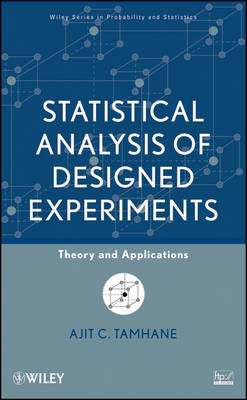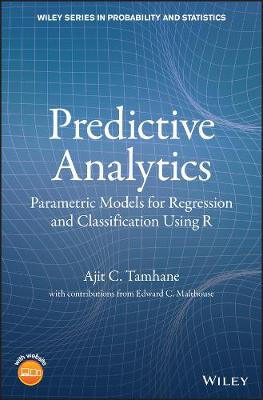Wiley Series in Probability and Statistics
1 primary work • 3 total works
Book 609
The tools and techniques of Design of Experiments (DOE) allow researchers to successfully collect, analyze, and interpret data across a wide array of disciplines. Statistical Analysis of Designed Experiments provides a modern and balanced treatment of DOE methodology with thorough coverage of the underlying theory and standard designs of experiments, guiding the reader through applications to research in various fields such as engineering, medicine, business, and the social sciences.
The book supplies a foundation for the subject, beginning with basic concepts of DOE and a review of elementary normal theory statistical methods. Subsequent chapters present a uniform, model-based approach to DOE. Each design is presented in a comprehensive format and is accompanied by a motivating example, discussion of the applicability of the design, and a model for its analysis using statistical methods such as graphical plots, analysis of variance (ANOVA), confidence intervals, and hypothesis tests.
Numerous theoretical and applied exercises are provided in each chapter, and answers to selected exercises are included at the end of the book. An appendix features three case studies that illustrate the challenges often encountered in real-world experiments, such as randomization, unbalanced data, and outliers. Minitab® software is used to perform analyses throughout the book, and an accompanying FTP site houses additional exercises and data sets.
With its breadth of real-world examples and accessible treatment of both theory and applications, Statistical Analysis of Designed Experiments is a valuable book for experimental design courses at the upper-undergraduate and graduate levels. It is also an indispensable reference for practicing statisticians, engineers, and scientists who would like to further their knowledge of DOE.
This book covers a broad range of topics in parametric regression and classification including multiple regression, logistic regression (binary and multinomial), discriminant analysis, Bayesian classification, generalized linear models and Cox regression for survival data. The book also gives brief introductions to some modern computer-intensive methods such as classification and regression trees (CART), neural networks and support vector machines.
The book is organized so that it can be used by both advanced undergraduate or masters students with applied interests and by doctoral students who also want to learn the underlying theory. This is done by devoting the main body of the text of each chapter with basic statistical methodology illustrated by real data examples. Derivations, proofs and extensions are relegated to the Technical Notes section of each chapter, Exercises are also divided into theoretical and applied. Answers to selected exercises are provided. A solution manual is available to instructors who adopt the text.
Data sets of moderate to large sizes are used in examples and exercises. They come from a variety of disciplines including business (finance, marketing and sales), economics, education, engineering and sciences (biological, health, physical and social). All data sets are available at the book's web site. Open source software R is used for all data analyses. R codes and outputs are provided for most examples. R codes are also available at the book's web site.
Predictive Analytics: Parametric Models for Regression and Classification Using R is ideal for a one-semester upper-level undergraduate and/or beginning level graduate course in regression for students in business, economics, finance, marketing, engineering, and computer science. It is also an excellent resource for practitioners in these fields.


